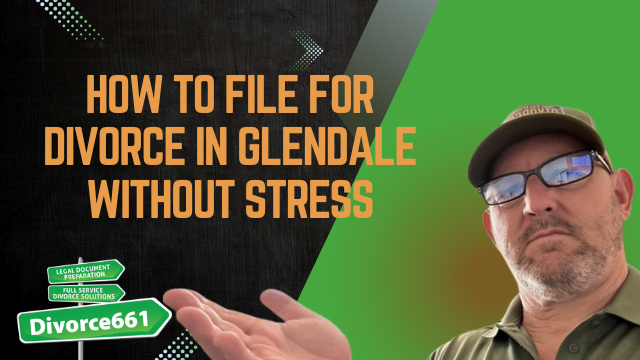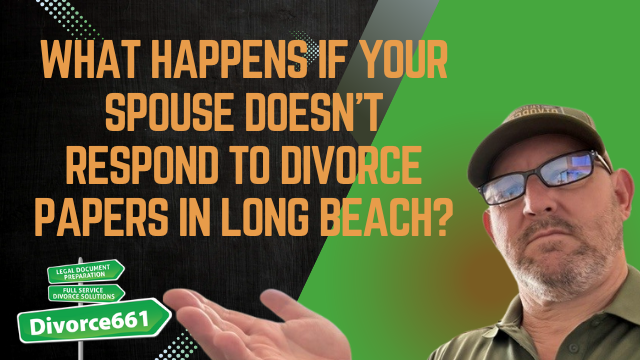How to File for Divorce in Glendale Without Stress
Filing for divorce in Glendale doesn’t have to mean long courthouse lines, confusing forms, or extra anxiety. Thanks to the Los Angeles County Superior Court’s e-filing system, many amicable divorces can be completed entirely online. The process is straightforward when you know the steps: prepare the paperwork, file electronically, serve your spouse legally, complete financial disclosures, draft a clear marital settlement agreement, and submit the final judgment for court approval.
Why online filing works for Glendale
The Los Angeles County Superior Court allows electronic filing for family law matters, which makes it possible to handle most of the divorce process remotely. For couples who agree on the major issues, this system removes the need to travel to the courthouse, wait in line, or spend hours on administration. Everything from submitting the initial petition to filing the final judgment can be handled digitally, speeding up the timeline and reducing stress.
Step-by-step: Filing your uncontested divorce remotely
- Prepare the petition and summons.Start with the basic documents that officially begin the divorce. These forms state the grounds for divorce and outline what you are asking the court to decide. Accuracy here matters. Clear, complete paperwork reduces delays when you e-file with the court.
- File electronically with Los Angeles County.Use the county’s e-filing system to submit your petition and related documents. Electronic filing is faster and more efficient than paper filing and eliminates the need to visit the courthouse in person.
- Ensure your spouse is served legally and properly.Proper service is essential. There are several methods for serving papers, and getting it right protects your case from being challenged later. If you prefer, a qualified provider can arrange and confirm service on your behalf so you don’t have to worry about the technicalities.
- Complete financial disclosures.Both parties must provide a full picture of income, assets, debts, and expenses. These disclosures are required for property division, support calculations, and to help draft a fair settlement. Organize pay stubs, bank statements, tax returns, and lists of assets to streamline this step.
- Draft a comprehensive marital settlement agreement.This document spells out how you’ll divide property and debt, address spousal support, and handle custody or visitation if applicable. A clear, detailed agreement prevents misunderstandings and is what often allows a divorce to be finalized without a hearing.
- Submit the final judgment for court approval.Once the agreement is signed and disclosures are filed, submit the final judgment to the court. If everything is in order, the judge will sign off and the divorce will be finalized—no courtroom appearance required for many uncontested cases.
What a remote divorce looks like in real life
Couples who are on the same page about the details can finish quickly. One Glendale couple completed their entire process remotely: filing, service, disclosures, and final judgment were handled electronically. Their case closed in just weeks with zero court visits and minimal stress. That kind of outcome is possible when both parties cooperate and the paperwork is handled correctly.
Zero stress, zero court visits.
Cost, timeline, and service options
For amicable cases, a flat-fee arrangement and 100 percent remote service simplify budgeting and remove surprises. Timelines vary depending on how quickly disclosures are completed and how fast the court processes filings, but streamlined, well-documented cases are often resolved much faster than traditional in-person approaches.
When this is a good option
- Both parties agree on the main issues or are willing to negotiate.
- Assets and debts are straightforward and do not require complex valuation.
- There are no high-conflict custody disputes or contested emergency issues.
- Both parties can exchange financial information and sign documents remotely.
When to consider other routes
- If there are significant disagreements about parenting, property division, or support.
- If complex business valuations or forensic accounting is required.
- If there is a history of domestic violence or other safety concerns that require in-person protections.
Next steps if you want a smoother divorce in Glendale
If you prefer to avoid courthouse trips and want a reliable, remote process handled for you, look for services that offer flat-fee packages, prepare and file the paperwork electronically, handle legal service, assist with disclosures, and draft the marital settlement agreement. A brief consultation can help determine whether a 100 percent remote filing is appropriate for your situation and outline a clear plan to move forward.
Ready to start? Schedule a free consultation to learn how a remote, flat-fee divorce can work for you and what the expected timeline will be based on your circumstances. Handling the paperwork right from the beginning makes the whole process faster, cleaner, and far less stressful.










